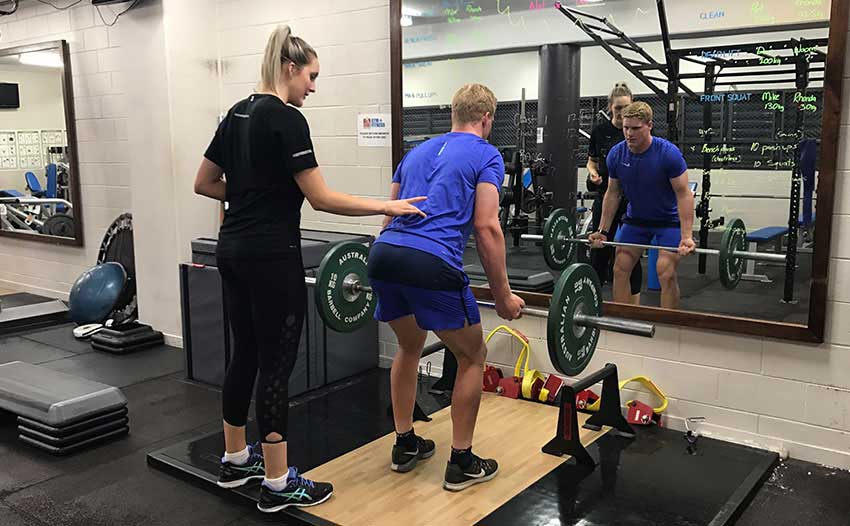
Sports Injuries and Exercise: 5 easy tips to prevent injury
Sport and exercise are great ways of getting involved in the community and being active, but what about when they do us harm? We’ve all had these injuries before and its true all physical activities carry some risk of injury.
But before retreating to the safety of the lounge room its important to remember the rewards far outweigh the risks. That avoiding physical activity due to injury may be the riskiest choice of all.
New data suggests that participation in sport and exercise can reduce the risk of premature death by 20-40%. However another study showed this may vary depending on the type of sport or exercise training used. Regardless of what sport or exercise you love doing its important to know how you can minimise your risk of injury.
So who gets injured?
Well guys the findings are strikingly consistent around the world, males account for three quarters of all sporting injuries. This is perhaps unsurprising as half of all sporting injuries being caused by motor sports, water sports and football codes, activities traditionally dominated by men. Secondly injury risk is strongly associated with age with 15 to 17 year olds almost ten times more likely to be injured than adults over the age of 65. This is good news, especially since “fear of injury” is commonly reported as a barrier to participating in an exercise program among older adults.
In terms of where injuries occur the most common joints are the knee (23%), followed by the elbow and forearm (20%), wrist (20%). Most injuries are caused by awkward falls (28%), collision (12%) and over exertion (10%)
Is Sport and Exercise becoming riskier?
The recent ABC news article showed concern over the number of children presenting with Anterior Crucial Ligament (ACL) tears that require reconstructive surgery. But lets get one thing straight physical fitness and motor co-ordination are protective against sporting injuries. With the decrease in physical activity and fitness seen in our younger generation it’s possible that today’s children simply have reduced tolerance to the physical demands of playing sport.
While troubling its critical to realise the level of risk remains very low at around 6.3 major injuries per 100,000 participants per year and these numbers should not discourage individuals or parents from encouraging their children to participate in sport.
How can I reduce my risk of injury?
Fortunately the recipe for injury prevention is tried and tested and experts suggest up to 50% of exercise and sports injuries can be prevented. So here are 5 tips to keep yourself injury free.
1. Always Warmup
Increasing the temperature of your muscles improves your muscles extensibility that is your muscles capacity to stretch and move. An appropriate warm-up is functional and mimics sports specific movements to increase blood flow and muscle elasticity. Thus reducing injury risk. This is also a great time to implement prehab or activation exercises to fire up your stabilising muscles, to make sure they are switched on when you need them the most.
2. Stretch
Good levels of flexibility also decreases injury risk, so make sure your incorporate stretching into your training regime. Just make sure your stretching is planned and purposeful for example Static stretching prior to activity decreases muscle activation and performance while dynamic stretching primes us for movement. If you’re are unsure of what stretch to use please see our stretch of the week page for more information.
3. Don’t go too hard too soon
New research from the Australian Institute of Sport shows us that injury risk almost entirely linked to training load errors. In other words its not working hard but rather rapid or excessive fluctuations in training intensity, volume or type that predispose people to injury. So progress gradually and have a planned training load that will allow you to progress continually without having to take time off due to injury.
4. Get strong and Stay strong
Regular resistance training has irrefutably shown to reduce injuries in both adults and young people. It has proven to be a key treatment in relieving lower back pain, strengthening bone and reducing blood pressure while also improving your function, aesthetics and performance… What’s not to like. Proper program design using progressive overload, and specific movements for your goals is important so make sure your training is individualised & supervised by a qualified professional.
5. Don’t get injured in the first place
Unfortunately, the strongest predictor of injury is having suffered the same injury previously. So one of the best things you can do to ensure you don’t get re-injured is to make sure you rehabilitate your past injury to the fullest. As a recurrent injury becomes harder and harder to manage. For more advice on specific injury treatment, training or prevention check out the Body Smart website